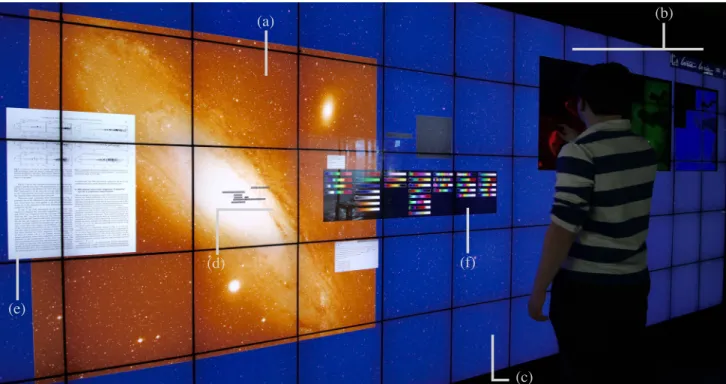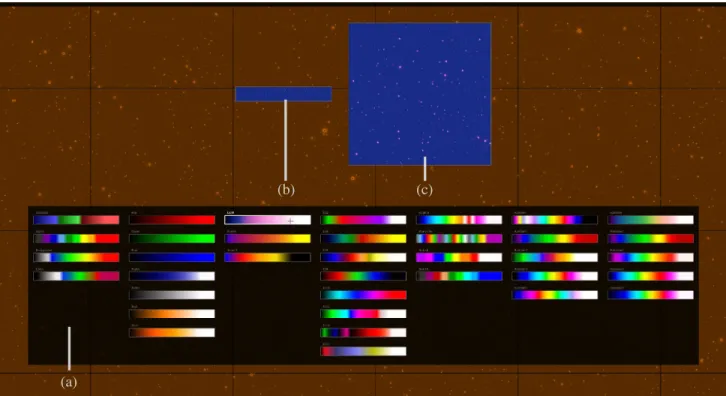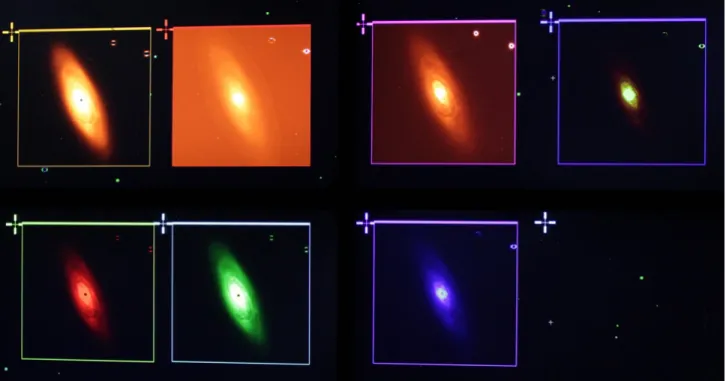Exploratory Visualization of Astronomical Data on Ultra-high-resolution Wall Displays
Texte intégral
Figure




Documents relatifs
Dans la grande majorité des cas, les analyses transcription- nelles ont révélé la présence simultanée du précurseur double brin et du microARN mature simple brin, comme
La solution présentée dans ce chapitre, basée sur une architecture où le n ud Potacco est utilisé en tant que n ud pair d'un réseau P2P, a pour objectif de prendre en
L'autorité parentale, l'hébergement et la prise en considération de l'opinion de l'enfant par le juge Mallien, Michaël Published in: L'hébergement de l'enfant Publication date:
Copyright and moral rights for the publications made accessible in the public portal are retained by the authors and/or other copyright owners and it is a condition of
In the regions where just polymer is present no unidirectional alignment is observed (no change in the brightness while rotating the cell) confirming the alignment of
We control three factors: how the remote user specifies the target (by turning the head or by turning the head and pointing at it), the position of the target relative to the
In this paper, we are discussing simple models that can help us study the immersion trade-offs created between user position that affects the size of the visual field that is covered
Results are archived on two types of output files with redundancy: (α,δ), exposures mid-times, magnitudes (psf-based and from catalogue), seeing, proper motions (computed,


